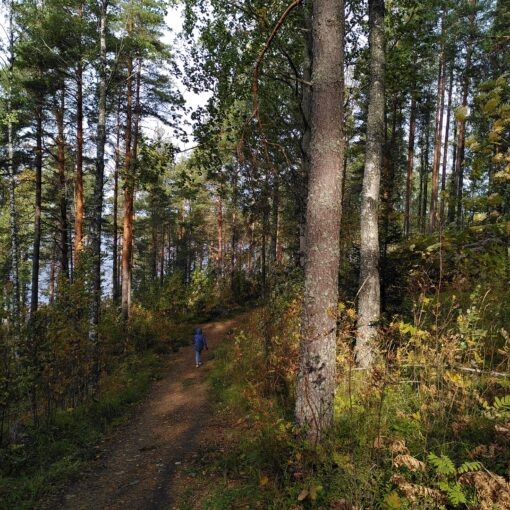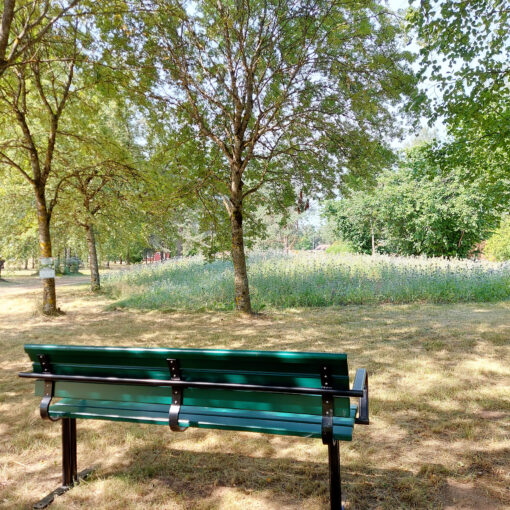In the early 2000s, a nature-based stormwater system was built in the residential area of Vuores in Tampere, which was groundbreaking in many ways. The stormwater system was designed to be innovative because it was located in a residential area under construction and there were concerns about its impact on the survival of valuable species and the water quality of the surrounding lakes.
A decision was taken to invest exceptionally heavily in the stormwater system by, for example, consulting stormwater experts, of which there were not many in Finland at the time. Vuores became the first residential area in Finland with stormwater regulations at the partial master plan level.
Today, stormwater is taken into account much better than was customary at the time of the construction of Vuores in the early 2000s.
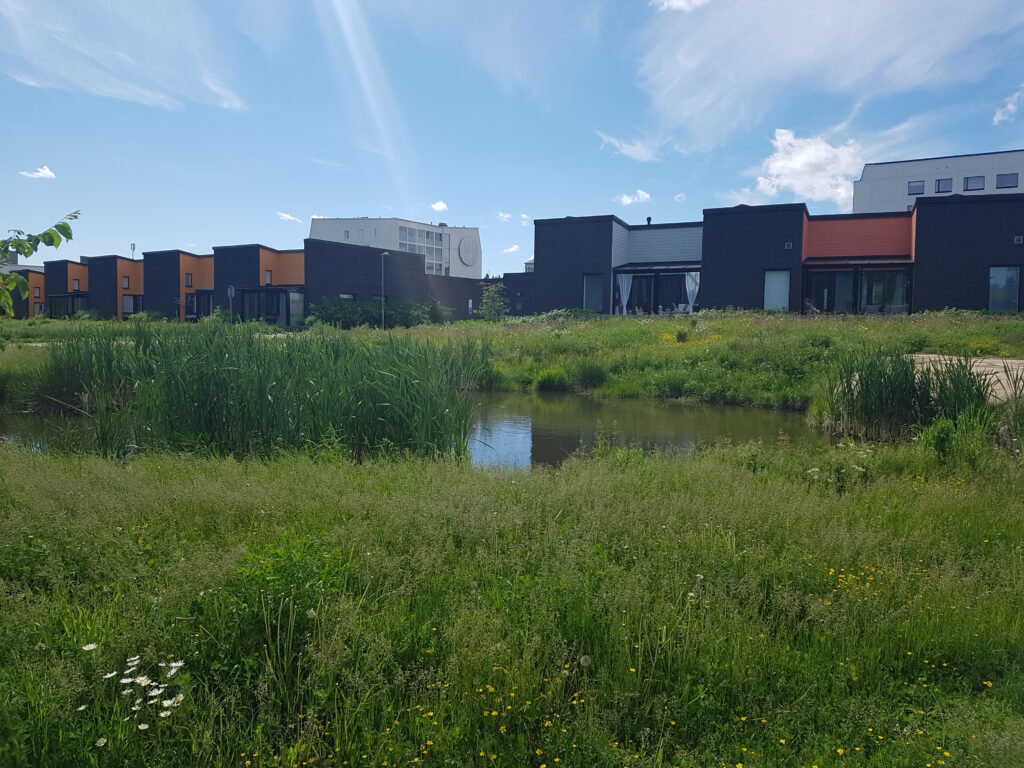
Diverse ways to detain and filter stormwater
The purpose of the stormwater system is to control the quality of stormwater and keep the flow rates from the residential area at pre-construction level. The achievement of these goals is ensured by nature-based solutions.
In Vuores, stormwater is not discharged into a field ditch, for example, from which pollutants reach the lakes quite directly; instead, the detention of stormwater is initiated already on the plots. From the plots, the waters flow through a variety of detention and filtration systems which filter out harmful substances and solids contained in the stormwater. In addition, the plants in the system bind nutrients from stormwater and microbial activity removes nitrogen and harmful substances from the water.
The most visible part of the stormwater system are the sedimentation basins, stormwater streams and alluvial meadows in the central park. In addition, the stormwater system comprises wetlands, vegetated swales and retention basins located throughout Vuores. Stormwater is also purified by means of a biofilter based on vegetation and soil layers.
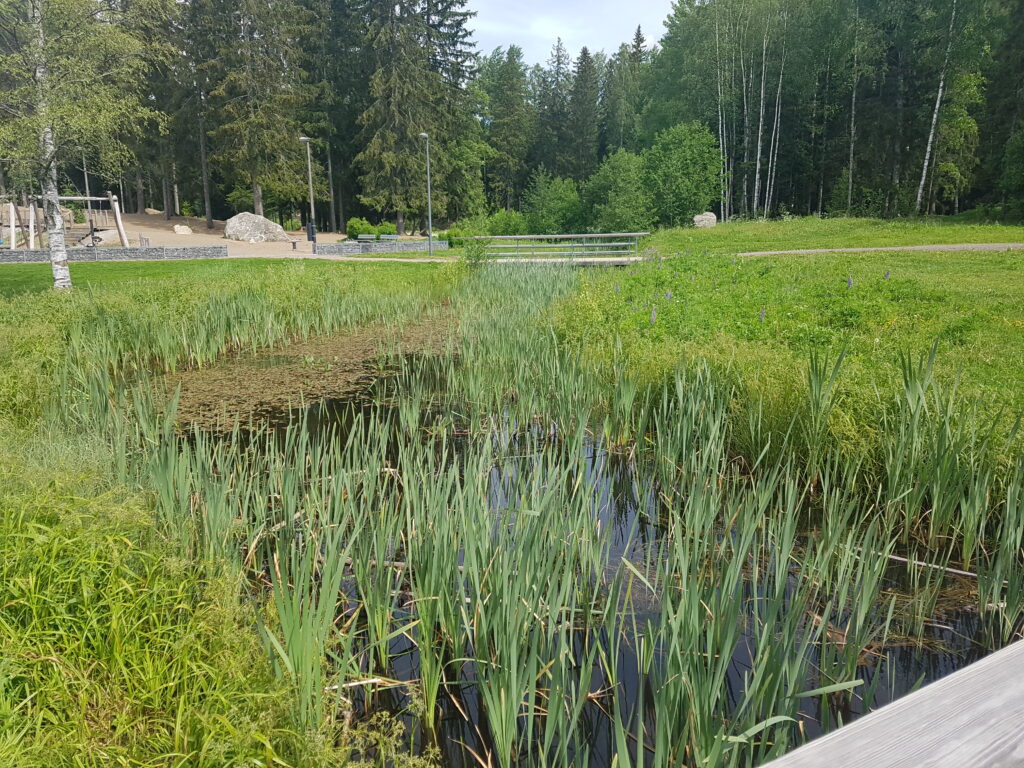
Reducing erosion and smoothing stormwater flows with alluvial meadows, submerged dams and winding structures built in stormwater streams as well as large rocks placed at the bottom of the streams, which also provide shelter for aquatic organisms, have a key role in the system as well. Vegetation planted and spread in the stormwater streams also slows down the flow rates. In addition, the ramps are fitted with coconut carpet for erosion protection, and cocoa bean shells are used as mulch to prevent weed growth.
The system monitors the quality and quantity of water. The results show that the stormwater system functions well, as the system retains nutrients and solids and smoothes the flow rates, thus reducing the eutrophic effect of stormwater in downstream waterways.
The stormwater system brings joy to residents
In recent years, the residents of Vuores have been both informed about the nature-based treatment of stormwater and surveyed for their views on the system. Information has been provided, for example, by means of signs describing the system and its function.
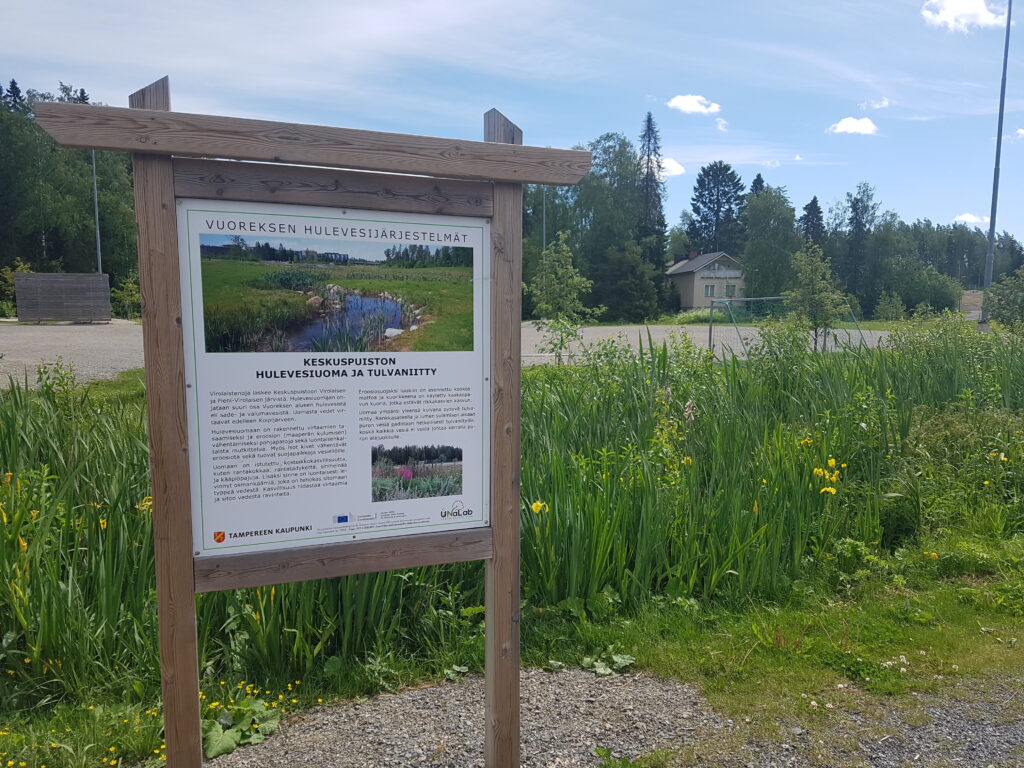
The residents perceive the stormwater system as a positive feature for the area as it increases the attractiveness and distinctiveness of the residential area, opportunities for recreation and relaxation and the area’s residents’ interest in nature.



